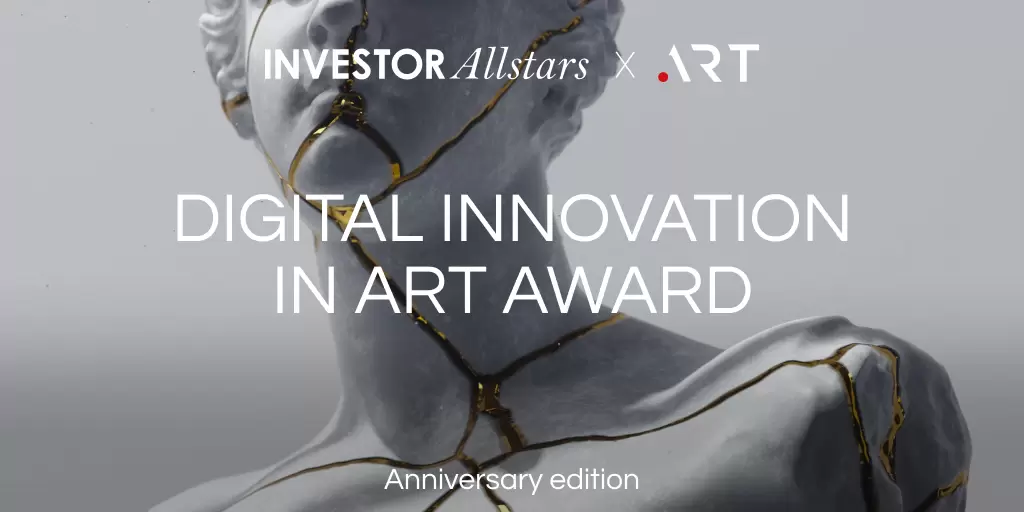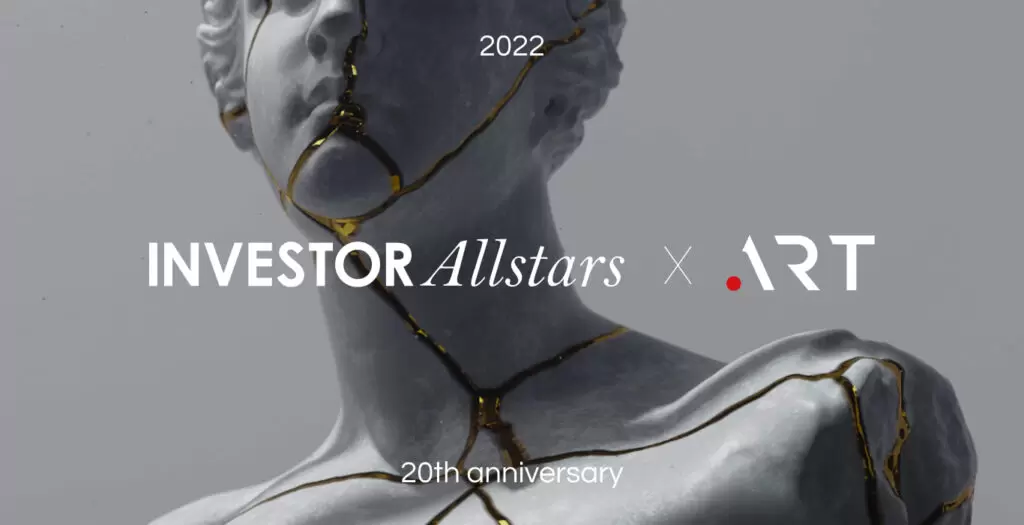Beyond AI: The Fascinating World of Martha Fiennes
Get ready to be drawn into the world of Martha Fiennes - where films aren't just watched, but experienced.


Above: Still from Yugen, a moving-image artwork by Martha Fiennes
Martha Fiennes is a celebrated film director, writer, and producer known for her innovative and thought-provoking works. Her passion for exploring the metaphysical and spiritual aspects of human existence is reflected in her films and art pieces, which delve deep into the complexities of the human mind and body. Her most recent exhibition, “YUGEN,” (yugen.art) held at Volte Art Projects (volte.art) in Dubai, showcased her signature work of the same name. This piece, which features visually stunning moving-images on a floor-to-ceiling screen created using generative coding technologies, stars Hollywood actress Salma Hayek Pinault and originally premiered at the Venice Film Festival in 2018.
Can you talk about the debate surrounding AI and intellectual property in relation to your project?
Sure, the use of AI in my project is fully contained within the artist’s intellectual property, but the issue of AI and intellectual property is complex. As soon as you use AI that is not fully owned by the artist, you have to be conscious of potential IP issues, especially if you become successful. For example, I’ve heard that even a photograph posted on Instagram is actually owned by Instagram.
However, I personally believe that AI is just a tool to explore and will always reflect the biases that it has been fed. It is not a replacement for the human mind and potential, which is what I find truly fascinating. As for the idea that AI-generated poetry or paintings will one day replace human artists, I don’t think that is a concern because there will always be humans who appreciate and value human art.

Martha Fiennes
In your work, you are giving up some control and agency to AI. How does that feel for you?
It feels very exciting for me. I come from the film industry and I have a deep understanding of how to construct moving images and sound. When I’m editing a film, I have complete control over what the audience experiences, but like any specific creative system, it has its own rules and conventions. My ‘hybrid’ AI-generated digital artworks effectively hand the editing process over to the ‘machine’. This is a complete shift of the filmmaking ‘rules’ but it yields fascinating results as a moving-image artwork. So, in this way, the process of handing over some of the editing control to AI was a delight for me. I can still set the potential for what could happen, but the final outcome is an unknown for me. It’s like giving the AI the autonomy to make its own decisions based on the potentials I have created. I can still see myself as the director, but the end result may be poetically interesting and unique. The first time I worked with AI was a big gamble because I couldn’t see the final outcome until the end of the process. It was an exciting moment to see how the AI performed. I was working intuitively and drawing on my experience as a filmmaker, but I was still working to some degree in the dark.
What is your perspective on the limitations of AI compared to the potential of the human mind and body?
AI is just a tool that can only replicate and repeat what it has been taught, inheriting any biases present in the data it was trained in. However, I believe that the human mind and potential is far more compelling and holds much greater power and creativity. I am interested in the spiritual and metaphysical aspects of human existence, as well as the possibilities of quantum computing. Although AI has advanced to the point of taking over in higher dimensions, it can never surpass the organic form connected to the pure creative force. The current AI we have is tool for exploration, but it will always be limited by its programming. I believe that the real excitement lies in being human and exploring the limits of the human mind and body. One of my favourite books is “Autobiography of a Yogi”. It describes and highlights the superhuman abilities of humans when they truly understand the potential for their own mind and body.
Are you worried that someday AI-generated poetry and paintings will replace real artists and there won’t be a need for them anymore?
The possibility of a dystopian future where machines completely take over and human artists are left behind is perhaps a real concern, if one chooses to think along those lines. However, I believe that the majority of people will ultimately do whatever it takes to resist that from happening and will always have a love for human creativity and art. There will always be those who explore and excite the potential for a dystopian future, but I believe that the majority will see beyond that.
At the moment, AI-generated music or art may be a curiosity for some, but it will never replace the human touch and emotion that goes into creating true art. I personally have a strong connection to the arts and can sense the difference between human-created art and AI-generated art. There is a coherence and intelligence that only comes from a human mind.
I’m also interested in the idea of intelligence and what constitutes the highest level of it. According to some beliefs, the human potential for intelligence is unparalleled beings. However, the same beliefs suggest that humanity’s overall level of consciousness is still ‘young’. The conversation about AI and its place in the world is important, but it’s also important to explore the deeper questions about intelligence and consciousness.

Still from Yugen, a moving-image artwork by Martha Fiennes
Could one compare your work with the viewer choice options in TV shows like Black Mirror?
The idea of giving the viewer the choice to shape a TV or movie plot has been attempted before, but I don’t think it’s been particularly successful. People want to have a cohesive narrative and a specific experience, rather than a split-up story with different potentials. The story has to be well-constructed by a human beings, and trying to do it with AI can become too complicated and unsatisfying.
However, in shifting the creative expression system of the work I am exploring to a different creative sector, to become that of ‘art’ enables such explorations. I am interested in exploring the possibilities of AI in storytelling, but in a different way. I find it exciting to hand over a degree of control of my work to AI, as it can yield something poetically interesting. I tend to think of it as working with serendipity and synchronicity. The challenge is not being able to see the AI work until the end of the process.
On a related note, I like the idea of slow reading, where you take time to contemplate and think about the narrative rather than just consuming it. It gives you a deeper level of intimacy with the author and the book. ‘Empathetic Listening’ is a similar concept. Wouldn’t it be great to have that taught in schools? It’s an important skill to have in life and in relationships. An ideal society, in my opinion, would encourage daily mindfulness and quiet time for individuals to connect with their inner selves and the world around them.

Still from Yugen, a moving-image artwork by Martha Fiennes.
Can you share some details about the projects you’re currently working on?
I have two projects in the works… On that note, I believe in co-creation, where fate and personal effort both play a role in shaping the outcome. At times, things may not happen even with efforts, but later they can suddenly materialize.
So, one of the things I’m working on is what I would call a “fate project”. It is based on the life of Mata Hari, an exotic dancer who was convicted of being a spy for Germany during World War I. It is an epic story set against the backdrop of the cultural birth of Belle Époque. I find the metaphysical and tragic aspects of her life to be incredibly meaningful and her femininity in the midst of the masculinity of war is what makes her story so compelling. She was put to death at the end of the war, but her life embodies the dualistic division that is often present during war – the division of the mind. I hope to bring this story to life and shed light on the themes of peace and war, and the dangers of divided thinking.
The second project is a limited TV series based on a true story about a woman in her 70s who has been abducted by aliens throughout her life in the Midwest of America. This project explores the truth behind abductions by beings residing at an alternate, dimensional level of consciousness and delves into the issue of dark forces at play in the universe.
Finally, I am working at the early stages of the next generative artwork. This one promises to be a game-changer. It will utilise extraordinary combined technologies and offer a fully immersive, multi-sensory experience. The content is grounded in the highest level of metaphysical expression. It will involve some very exciting collaborations too.






